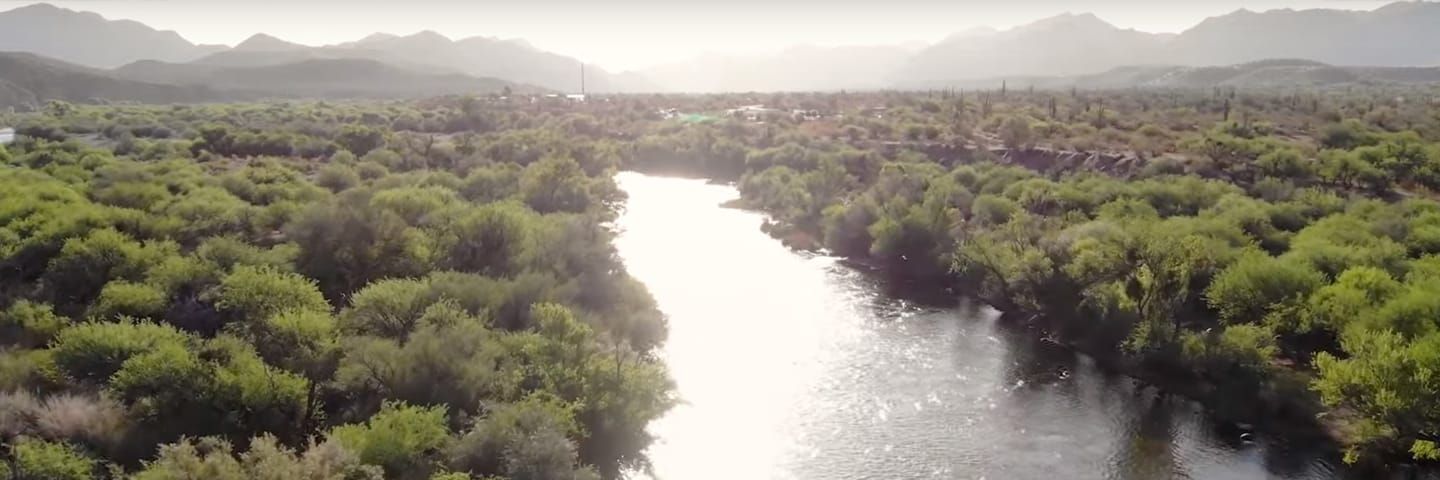November is Native American Heritage Month in the USA, also known as American Indian and Alaskan Native Heritage Month. According to the non-profit organization National Congress of American Indians, it is “a time to celebrate rich and diverse cultures, traditions, and histories, and to acknowledge the important contributions of Native people.”
Our US partner universities understand the importance of representation and inclusion on their campuses. That’s why they support initiatives by students and staff to promote Native American culture. They want to create environments where American Indians feel respected and valued.
Arizona State University
According to the National Center for Education Statistics, American Indians make up less than 1% of all college students in the USA. At Arizona State University, there are 3,500 Native American students on campus. This number is growing each year and it is the largest among US colleges and universities according to ASU Now’s research.
ASU sits on the ancestral lands of many Indigenous peoples, including the Akimel O’odham (Pima people) and Xalychidom Piipaash (Maricopa people). Because of this, the University understands the role it plays in acknowledging and supporting tribal nations.

One of the ways it does this is through the Tribal Nations Tour outreach program. Annabell Bowen is director of American Indian Initiatives for the Office of University Affairs, and she arranges visits to all of Arizona’s tribes.
Through these visits, which include presentations on wellness, college readiness and career preparation, young Indigenous people can meet ASU staff and students who are Native American, and imagine themselves joining this community.
Annabell Bowen says:
share this quote
Other initiatives include Turning Points magazine, which was first published in 2017. It is the first magazine written by and for Indigenous ASU students.
In addition, there is the annual ASU Pow Wow, which has been hosted by the University for more than 30 years. Representatives from over 100 tribes across the USA and Canada come to Arizona for this 3-day event. It is a chance to celebrate indigenous culture through dance, song and spiritual practices.
These are just some of the ways that ASU supports its Native American community, and there is a lot more being done.
Further resources that encourage a sense of community among ASU’s Native American students include:
University of Connecticut
The University of Connecticut (UConn) is located in territory of the Mohegan, Pequot, Schaghticoke, Paugussett, Nipmuc, and Lenape Peoples. The University acknowledges its duty to uphold its responsibilities to protect this land and the importance of engaging with local Native American communities.
One UConn student in particular has worked hard to improve representation for American Indians on campus. Sage Phillips is a member of the Penobscot Nation in Maine, and she joined UConn with the hope of leaving a legacy.
Phillips wanted to be part of a strong Native American community, but she wasn’t sure UConn could offer this. Despite her initial hesitation, she joined UConn and took the bold step of creating the community she wanted to see.

In her freshman year, Phillips joined UConn’s Native American Cultural Programs (NACP). She also started a job at the University’s Office for Diversity, Equity and Inclusion, where she helped plan Indigenous Peoples Week and Native American Month.
However, Phillips found that student involvement was still not high enough and that there must be more she could do. That’s when she created the Native American Indigenous Students Association (NAISA).
NAISA is a place “where members can reclaim their cultural identities… NAISA also aims to educated the broader UConn community on native history, cultural diversity and current events.” It’s important to Phillips that prospective students know that when they get to UConn, there will be a place they can call home.
However, there is more still to be done. Philips is currently working on a project to gather data about how UConn obtained its land from 7 local tribes. Her ultimate goal is to look at “how we can provide reparations for those whose lands UConn occupies.”
Pace University
Finally, at Pace University in New York, it is a similar story. Students themselves are driving forward initiatives to recognise the importance of Native American Heritage.
For example, the Eagle Project is a non-profit organization whose mission is to draw upon the performing arts to explore and better understand the American identity through Native American heritage.
Matthew Champagne is one of the students heavily involved in the project, which is in its 4th year. As associate artistic director, Champagne works towards raising awareness and paying homage to the culture, customs, and history of North America’s indigenous tribes.
A long-term goal for the Eagle Project is to establish a full post-colonial anthology of Native American plays. It also hopes to create a language center, where everyone is welcome to learn more about North America’s hundreds of Native American languages.
Champagne believes that the skills he learned at Pace University and the staff there have directly influenced the success of the Eagle Project. He says:
share this quote
According to Champagne, Pace taught him how to question, to think rationally, and listen to the people and what they need.
Shape your future at a US university
The US is an incredibly exciting place to study, and its university campuses are famous for being friendly and welcoming. Diversity and inclusion is an important part of campus life. This means that wherever you are from and wherever you decide to study in the USA, you can be sure you’ll find a place to call home.
With Kaplan, you can apply to study a degree at our university partners in the USA. Our expert team of advisors would be happy to help you start your journey, so why not get in touch?



